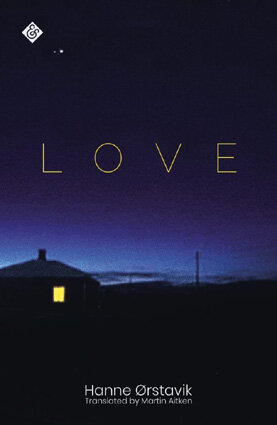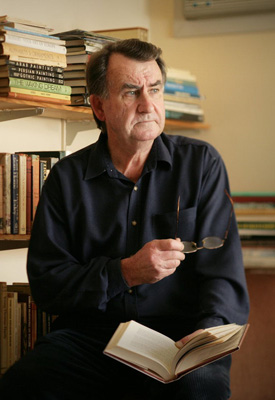I was drawn to the bold premise of this novel where one day all Palestinian Arabs suddenly vanish from the State of Israel. This challenges the notion that if Palestinians were to leave the region it would solve the biggest problems of this area of The Middle East. It's an inventive way of considering this longstanding conflict and, sadly, continues to feel extremely relevant today though the book was first published in Arabic in 2014 (with the first English translation appearing in 2019.) The narrative brings this sudden occurrence to life through the voices and competing opinions of those who remain, but it's primarily focused through the lens of Israeli journalist Ariel who reads through the notebooks of his vanished Palestinian friend and neighbour Alaa while writing news articles on reactions to the ongoing situation. But before the big event occurs I was immediately emotionally drawn into the story with Alaa's description of the death of his beloved grandmother. I felt his deep sense of grief which is represented in the often repeated metaphor: “Longing for you is like holding a rose of thorns!” It's touching how her charismatic presence and staunch devotion to Jaffa seem to fill this novel even though she dies at the very beginning. Her loss which proceeds the entire Palestinian people's disappearance seems to underpin a question posed in various ways throughout the novel: what remains in a physical landscape after part of its people and their culture have gone or been destroyed?
It was compelling how the initial disappearance of the Palestinians is viewed from a number of different characters in the community whose lives are immediately impacted by the loss. Inconveniences and larger immediate problems such as the loss of manual labour, delayed buses, closed shops and the cancellation of a medical operation gradually build to larger tensions concerning how the State of Israel will function without any Palestinian Arabs. The state anxiously requires that everyone must register their citizenship as a way of definitively categorising who belongs and who doesn't. I appreciated how the author represented a wide range of perspectives from highly prejudiced to fearful to sympathetic to indifferent. From what I understand some of these points of view were taken from or at least inspired by real interviews and speeches. Though we're only given a small glimpse of a number of characters' lives, I found the way this was structured to be effective because it gave a snapshot of so many different voices and reactions. It shows the deep seeded dangerous rhetoric believed by some that Israel is the only democratic nation in this area and the Palestinian Arabs are a threatening inconvenient presence that need to be controlled. However, others assume that their disappearance must have been somehow orchestrated by the Israeli state and worry for their welfare.
I found it interesting how both Alaa and Ariel's fathers are absent for different reasons and how the reasons for their fathers' deaths influence each man's beliefs and how they are perceived within their communities. Though they are friends and there are accounts of how they socialised with one another, there are also sections which describe how they have very different beliefs which stem from competing ideological stances and their respective positions within the society. Initially I felt uncertain how much I believed in their friendship and I think that's partly with how the novel is structured, but I gradually came to feel that they have quite a complicated connection with each other. In particular, there's a very powerful scene where Alaa has a very public rant at how Ariel isn't seeing his point of view.
Ariel is quite a complicated figure as he's in some ways liberal but also adheres to Zionist beliefs. Alarming scenes from his past are gradually shown and it also grows increasingly disturbing how Ariel freely colonizes Alaa's apartment even though he's only been gone a short time. Ariel reads Alaa's notebook, sleeps in his bed, drinks his wine and finally plans to change the locks. Though they shared a friendship, it feels like Ariel reverts to the stance that any space which is abandoned by Palestinians can be freely taken and he feels justified in doing so. However, there's a tension because he hears noises as if the space is being haunted or that Alaa may return at any moment to reclaim his space. There's also an unsettling painting in Alaa's apartment of a cloaked figure staring out as if continuing to bear witness.
One of the most devastating sections of the novel concerns a much older former Israeli soldier named Dayan's memory of witnessing and being involved with the rape and terrorisation of an Arab woman and man. He's continued seeing the woman on the street for many years but now that the Palestinians have vanished he's not able to ask her for forgiveness and paradoxically he resents her for depriving him of that opportunity. This passage seemed to function as both a literal account, but it's also symbolic of how if the Palestinians were to disappear there would be no way for the Israelis to atone for their oppressive actions. Some members of my bookclub posed an intriguing question considering whether the woman in this section is Alaa's grandmother and if Dayan is related to Ariel. It certainly seems possible but I didn't think this was the case because I believe the woman disappears with the other Palestinians rather than dying before that occurrence, but maybe that's my own interpretation. I'd be keen to hear if other readers wondered this or have other theories/possible answers.
The novel feels somewhere between a documentary and piece of speculative fiction to me. The points of view of various individuals give a sense of the narrative a nation creates about itself to justify its actions and policies. This statement stood out to me: “An illusion is enough to live the lie that later becomes the truth.” As the Palestinians are being pushed out of the country, imprisoned or killed there's the danger their narrative and point of view will disappear or be erased. Alaa maintains a notebook partly because “I write to remember, and to remind, so memories are not erased. Memory is my last lifeline.” Though the novel describes a fantastical occurrence which is never explained it doesn't feel as much like speculative fiction because the disappearance of the Palestinians has been occurring in a literal way ever since the beginning of the Nakba and 1948 events which the grandmother recalls.
Some readers have expressed concerns over whether this novel gives a balanced take on this conflict given the author is Palestinian. Certainly the writer is coming from a certain point of view and she's also a journalist. However, this isn't an article or piece of non-fiction. It's a novel and like all artistic creations is by its very nature from a subjective perspective. I'm in no way an expert in this conflict, but the atrocities being experienced by both Palestinians and Israelis in the region is well documented. This novel made me think about the recent documentary 'No Other Land' (which won an Oscar earlier this year.) It feels especially relevant given that at the centre of the documentary is a friendship between an Israeli and Palestinian who are activists. It's a really powerful film and I'd highly recommend watching it.
Overall, I felt that this novel meaningfully shows how a place truly comes to life through the multiplicity of experiences and perspectives of its different citizens. The grandmother viewed Jaffa in a certain way. Alaa viewed it a different way. And Ariel views it another way. Just as Alaa longs to speak with his grandmother again to see her perspective, Ariel desires to speak with Alaa. So the loss of each individual is not only a physical absence but mean that an essential part of this place's character has also been lost. Though this is a very specific story its concept and ideas could easily be applied to many different areas of the world which have been colonized or where there are deep seeded conflicts between different cultures, religions or nationalities. It made me think of the novel “Exit West” by Mohsin Hamid as it uses a fantastical occurrence as a way to differently consider a larger political issue. As some readers have remarked and Azem has cited Jose Saramago's excellent novel “Blindness” also feels like an influence. But Azem still does something very unique in this book – not least of which is portray a grandmother/grandchild connection which feels very emotional and true.




























